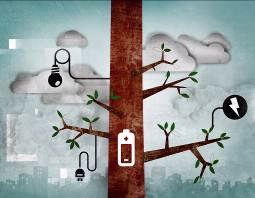EMBARGOED FOR RELEASE
ACS News Service Weekly PressPac: June 19, 2013
An environmentally friendly battery made from wood
“Tin Anode for Sodium-Ion Batteries Using Natural Wood Fiber as a Mechanical Buffer and Electrolyte Reservoir”
Nano Letters
Taking inspiration from trees, scientists have developed a battery made from a sliver of wood coated with tin that shows promise for becoming a tiny, long-lasting, efficient and environmentally friendly energy source. Their report on the device — 1,000 times thinner than a sheet of paper — appears in the journal Nano Letters.
Liangbing Hu, Teng Li and colleagues point out that today’s batteries often use stiff, non-flexible substrates, which are too rigid to release the stress that occurs as ions flow through the battery. They knew that wood fibers from trees are supple and naturally designed to hold mineral-rich water, similar to the electrolyte in batteries. They decided to explore use of wood as the base of an experimental sodium-ion battery. Using sodium rather than lithium would make the device environmentally friendly.
Lead author Hongli Zhu and other team members describe lab experiments in which the device performed successfully though 400 charge-discharge cycles, putting it among the longest-lasting of all sodium-ion nanobatteries. Batteries using the new technology would be best suited for large-scale energy storage applications, such as wind farms or solar energy installations, the report indicates.
The authors acknowledge support from the National Science Foundation and the University of Maryland NanoCenter.
Contact
Science Inquiries: Michael Woods, Editor, 202-872-6293
General Inquiries: Michael Bernstein, 202-872-6042


